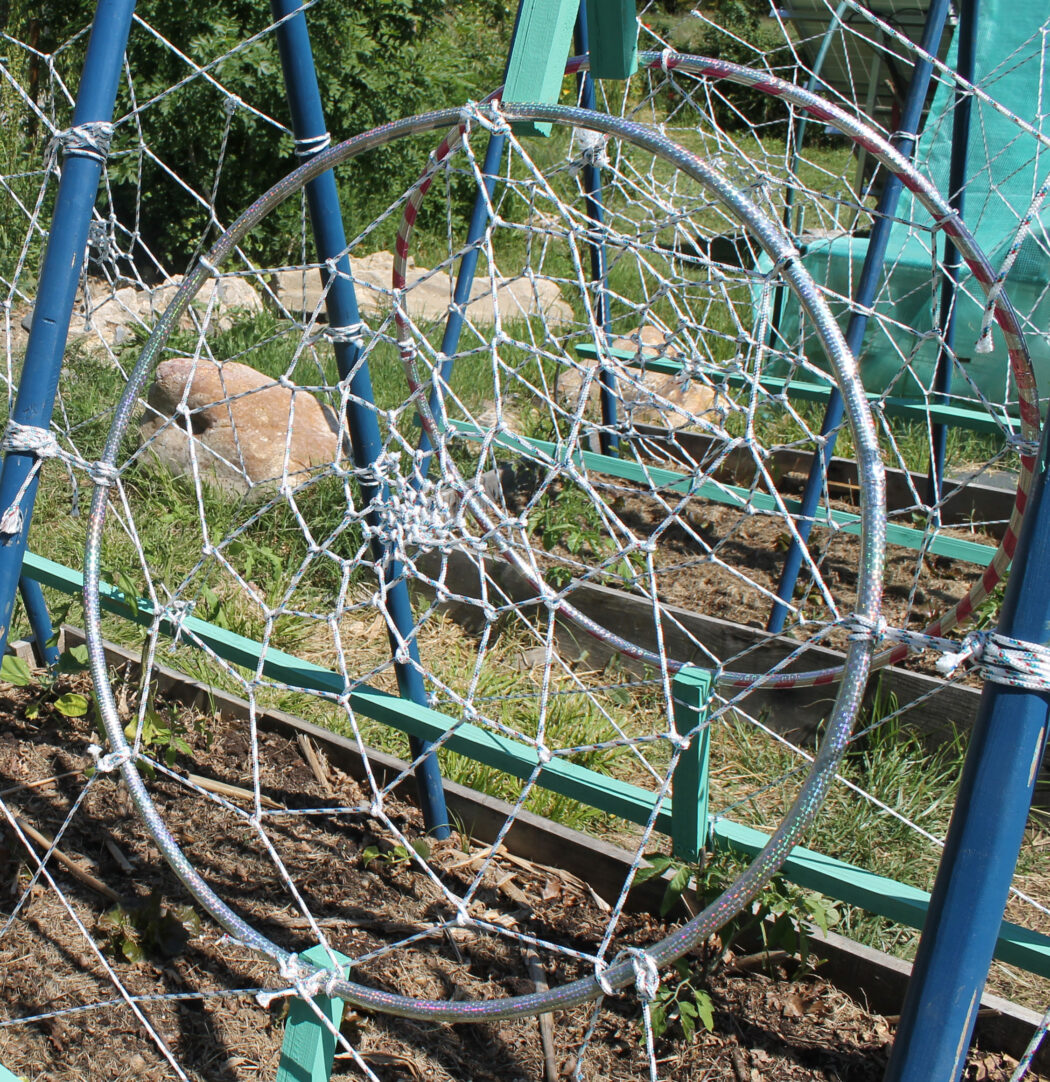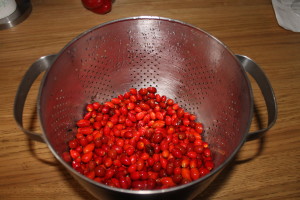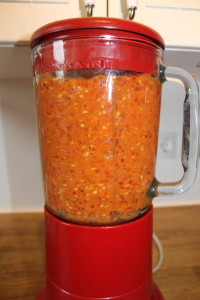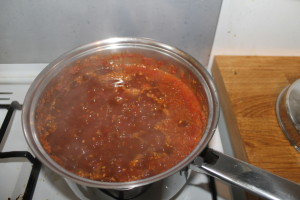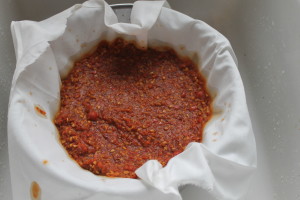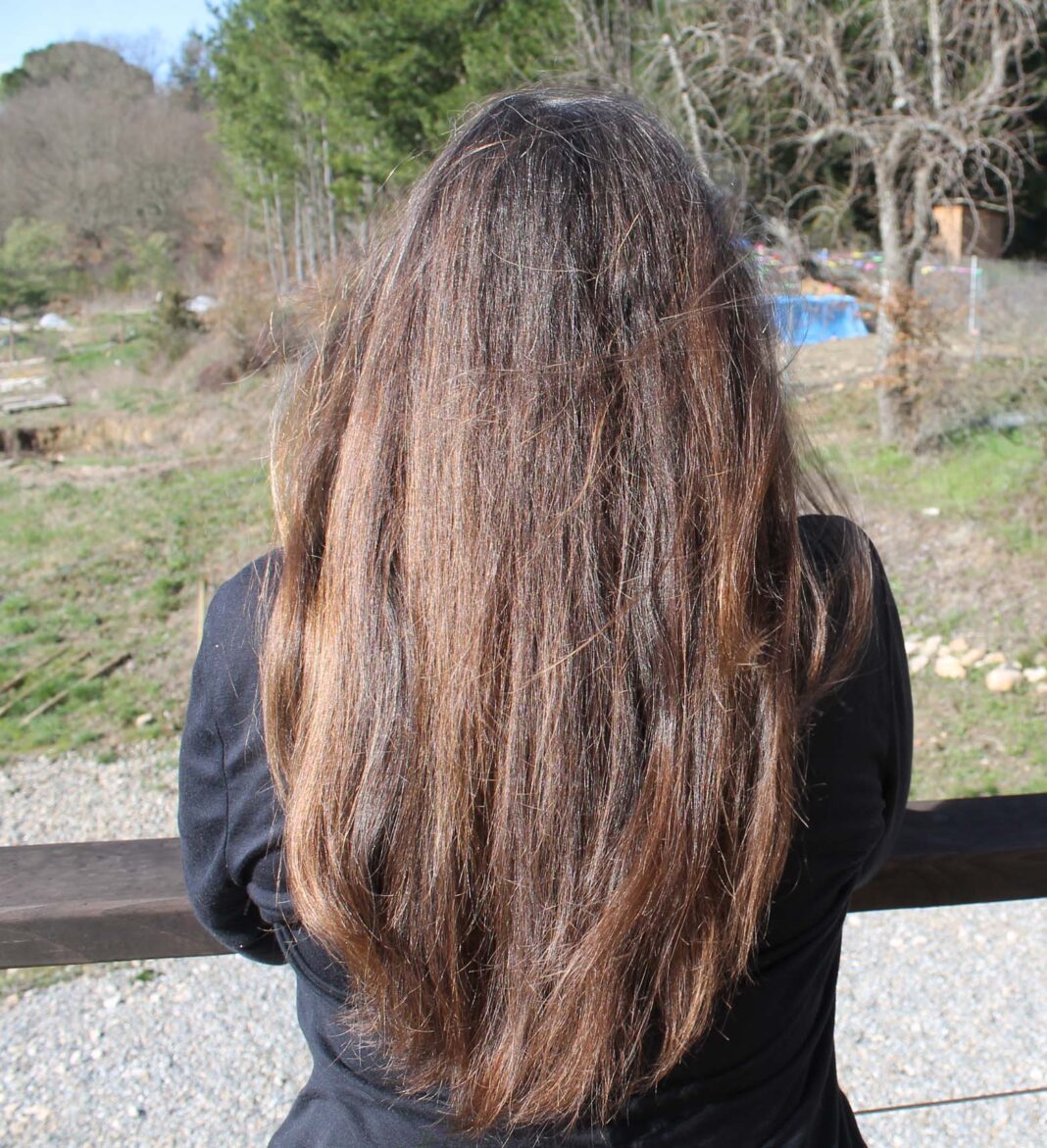
Rosehip syrup
This week I made rosehip syrup. Our hedgerows have masses of wild roses and at this time of year the hips are bright red. Rosehips are an excellent, natural and local source of vitamin C through the winter, much of which is retained in the syrup if the hips are prepared immediately after picking.
It’s been raining here for the past week, so I picked the hips in the rain and quickly stopped being too selective and just picked bunches on the stem to sort out inside, out of the rain. I don’t have any scales, so son’t know how much I picked. It took around an hour and it is not as easy as it looks. These little berries hide amongst the thorns very well. Maybe a kilo?
It took at least another hour to cut off all the stems and top and tail each one with kitchen scissors. Then I ended up with about half as much by volume, but that filled the blender so was just the right amount!
I’ve never made rosehip syrup before, so I looked up a few recipes on the internet. Many suggest chopping the hips by hand or in a food processor. I haven’t got a food processor, but I’ve got a blender so I used that and it worked fine. I just added a bit more water as the pulp mushed down.
It’s OK to guess at amounts for recipes if you are making something relatively simple and you can taste it as you go along – I thoroughly recommend this approach as this helps develop your intuition. So I put the pulp in a large saucepan, added about half as much raw cane sugar as pulp and topped the pan up with water and brought it to the boil. I then simmered it for around 15 minutes, until the flesh began to break down.
The next stage is straining the syrup. All the recipes talk about using a jelly bag, I have no idea what that is and doubt whether I’d be able to find one here, so I used a piece of clean white cotton from a pillowcase. (I save the IKEA pillowcases that come in a set with a duvet cover just for something like this, as the pillowcases don’t fit our pillows.)
The strained pulp then goes back into the saucepan with a bit more water and a bit more sugar and is brought to the boil, simmered again and strained again, through a fresh piece of cotton.
That’s it. I then bottled it in bottles and jars that I’d kept and sterilised by boiling them for about 20 minutes in salt water. I ended up with about a litre of delicious syrup. It tastes sweet, fruity and slightly exotic. Worth the effort? i thought so at the time, but haven’t made it since.
Lessons from water
You May Also Like

Winter in Rural Galicia
December 15, 2022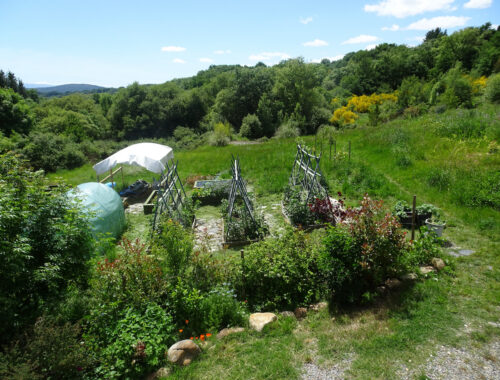
Medusa’s Garden
April 29, 2014